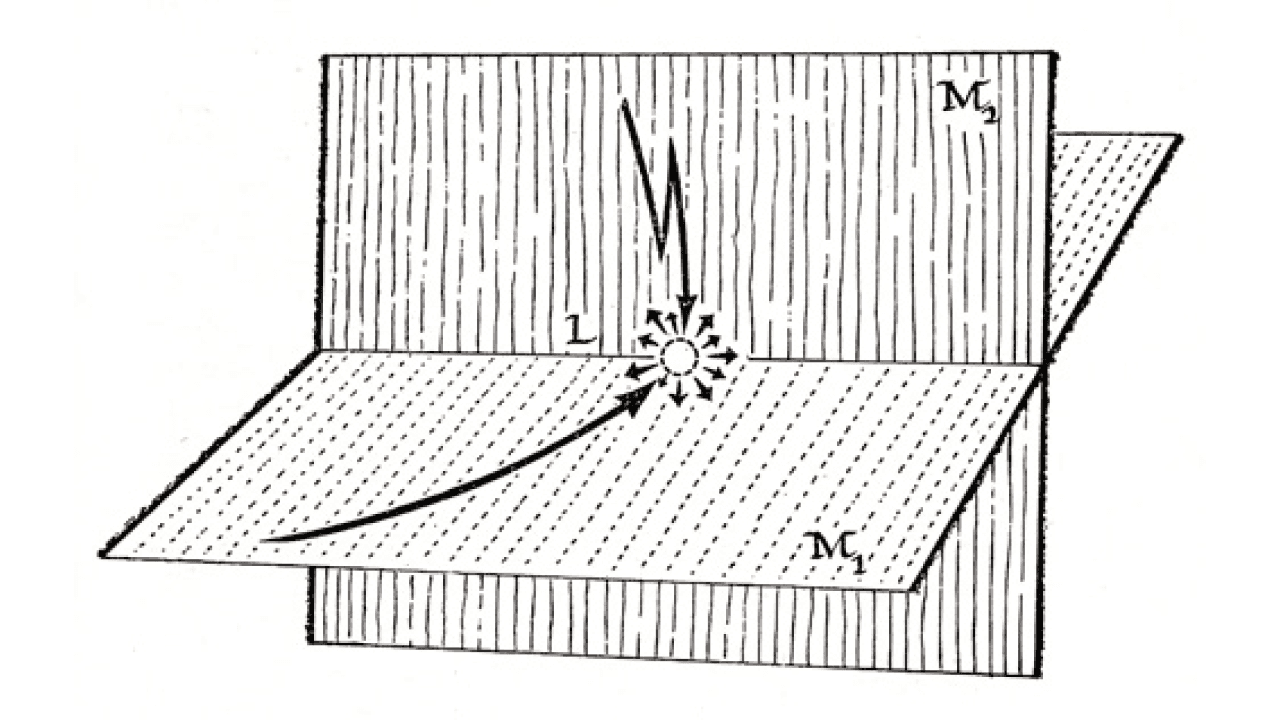Bisociation – A Mental Model for Creative Thinking
Budding
·
22 Feb 2022
To observe how we usually think about something non-trivial is becoming incredibly difficult. While most of us think differently in different contexts, we usually think on a single mental plane or dimension.
Arthur Koestler, a Hungarian-born British novelist, journalist, and critic in his book The Act of Creation (1964) described a mental model called bisociation, which is very different from our dominant way of thinking and is common to humour, art and science.
What is bisociation

Perceiving an idea from two independent mental frames of reference and discovering an intersection which eventually leads to the association not just limited to one but bisociated with two. That equilibrium where the balance of emotion and thought becomes unstable is called bisociation.
On the surface, association and bisociation may seem similar, but there's a clear distinction between how both operate.
In association, the combinations emerge from different ideas in a single mental frame of reference. In bisociation, independent mental frames of reference combine into a unique intersection that gives birth to the creative act.
Let's understand this with an example of how a pun operates in humour.
The pun is the bisociation of two different meanings of two words tied together by how similar both sound. So the common intersection of how two words sound similar but have very different meanings gives rise to a unique relationship between incompatible thoughts.
How it manifests differently in science and art
The outcomes of science form a pattern in which the incompatible frames of reference merge and synthesize into a higher single frame of reference, towards universal laws. The best example of this pattern is the river-ocean relationship, wherein the divergences in the river ultimately merge into the ocean.
The progress in art does not display this kind of unifying pattern. The frames of reference with which the artist operates are juxtaposed based on the sensory and emotive potential. This kind of pattern is contrary to the river-ocean relationship in science. It's more like the journey of a river stream traced back to its origin from a mountain spring.
How we can cultivate it in our daily lives
Determine the mental frames of reference and then try to discover the logical relationship between the two
In most cases, the logical relationship will be hidden and has to be resurfaced
The next step is to find the link whose goal should be to create an emotive or sensory outcome
For example, try thinking about love from the bisociation of fear and freedom
To observe how we usually think about something non-trivial is becoming incredibly difficult. While most of us think differently in different contexts, we usually think on a single mental plane or dimension.
Arthur Koestler, a Hungarian-born British novelist, journalist, and critic in his book The Act of Creation (1964) described a mental model called bisociation, which is very different from our dominant way of thinking and is common to humour, art and science.
What is bisociation

Perceiving an idea from two independent mental frames of reference and discovering an intersection which eventually leads to the association not just limited to one but bisociated with two. That equilibrium where the balance of emotion and thought becomes unstable is called bisociation.
On the surface, association and bisociation may seem similar, but there's a clear distinction between how both operate.
In association, the combinations emerge from different ideas in a single mental frame of reference. In bisociation, independent mental frames of reference combine into a unique intersection that gives birth to the creative act.
Let's understand this with an example of how a pun operates in humour.
The pun is the bisociation of two different meanings of two words tied together by how similar both sound. So the common intersection of how two words sound similar but have very different meanings gives rise to a unique relationship between incompatible thoughts.
How it manifests differently in science and art
The outcomes of science form a pattern in which the incompatible frames of reference merge and synthesize into a higher single frame of reference, towards universal laws. The best example of this pattern is the river-ocean relationship, wherein the divergences in the river ultimately merge into the ocean.
The progress in art does not display this kind of unifying pattern. The frames of reference with which the artist operates are juxtaposed based on the sensory and emotive potential. This kind of pattern is contrary to the river-ocean relationship in science. It's more like the journey of a river stream traced back to its origin from a mountain spring.
How we can cultivate it in our daily lives
Determine the mental frames of reference and then try to discover the logical relationship between the two
In most cases, the logical relationship will be hidden and has to be resurfaced
The next step is to find the link whose goal should be to create an emotive or sensory outcome
For example, try thinking about love from the bisociation of fear and freedom
© 2023 Prakhar Shivam · Currently based in India
Built with Framer · Typeset in Satoshi & Newsreader
© 2023 Prakhar Shivam · Currently based in India
Built with Framer · Typeset in Satoshi & Newsreader
© 2023 Prakhar Shivam · Currently based in India
Built with Framer · Typeset in Satoshi & Newsreader